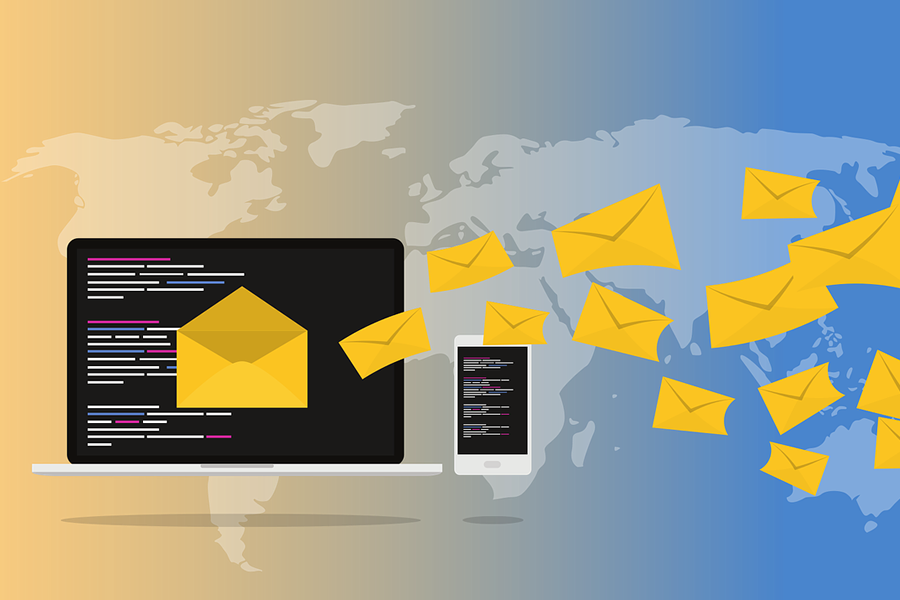


Email is something of a black art for many people. How many times have you sent an email to someone, not heard back, chased them and they’ve said “I never received your email”? It’s happened to everyone.
Why does this happen? Where does the email go once you’ve pressed “send”? Sometimes there is a simple explanation like it’s been flagged as spam by the recipient’s server or anti-virus software on their computer. Sometimes they might have just unwittingly deleted it. Some might even suggest it was intercepted by the FBI or MI6. Sometimes it just appears to go into the ether; that weird vacuum of internet space where nothing comes out the other side, like a black hole.
As a web development company, one of the services we offer is email hosting. When someone commissions us to build a website, it’s standard practice for them to want their own domain name and email address as well. We also offer a bulk email app for sending email newsletters and promotions. As a result, we are well aware of the issues represented by email and know all about the perils of load placed on a mail server when large volumes are being sent and received.
Fundamentally, getting over an issue of sending large quantities of email is straightforward: Need to send more? Just add more servers. Not only is there a substantial cost involved with at, the real problem is making sure those emails end up in people's inboxes and not their spam folders. There is a big difference between sending email and delivering email.
What many people don't realize is that today's spam filters don't just scan an email for questionable keywords (for example, references to viagra or porn). They don’t just look at the email address of the sender; they now look at the servers sending the email and make sure the server sending the mail matches the address of the recipient. Most of today's biggest email services, such as Gmail, Yahoo Mail and Outlook.com, use something called “reputation scoring” to rank the likelihood of spam from a server that's sending an email.
Reputation scoring is a big part of how email providers keep your inbox from being completely flooded with spam. It also helps protect you from phishing scams and malware. But these little-known barriers also make it much harder for people to send group emails, even in small amounts. That's where companies like Mailchimp come in.
As well as running our own mass email app, we also use Mailchimp for some of our clients with a larger customer base. This is because Mailchimp are a dedicated bulk mailing service, are well renowned and consequently have one of the best reputation scores out there. They send over a billion emails every day. So how do they manage this without getting blacklisted?
Mailchimp will break up a mass emailing into batches. That enables the company to get some feedback from the first batch before making a full commitment. They send increasingly large batches and see how they perform and, from those initial batches, Mailchimp can see how many recipients open the email and click on what's inside; how many unsubscribe or complain about abuse. If most people open the emails right away, that's a signal to Mailchimp that the user isn't spamming their list. But if lots of recipients unsubscribe or complain, the company knows that something is wrong, and it can prevent the next batch from going out.
We use similar logic in our in-house app but, because of their high reputation score and seemingly unlimited resources, Mailchimp enjoys something of a dominance of the market. These days, new email servers don't start with a reputation score of zero - they start at less than zero. For email providers, protecting their users from spam, phishing schemes, and malware is a top priority, so they treat all new servers with suspicion.
So what is the best route for you to take? If you are looking at starting an email marketing campaign should you use our app or Mailchimp? Well firstly both are good. Mailchimp is free up to 2,000 subscribers and 12,000 emails per month. After that it can start getting a lot more pricey. Our mail app isn’t free but it becomes cheaper relative to Mailchimp the more emails you send. Of course with Mailchimp’s resources they are probably better at handling bulk emails than we are so it is a trade-off. Either way, if you get us to manage your mail campaigns for you, you will be guaranteed good, friendly and fast service with no hassle for you, so it’s worth giving us a call.
Contact us to see which route is best for you
Published on 02 October 2018 at 14:14:00
Copyright © 2001 - 2026 Securio Ltd trading as Datapartners. All Rights Reserved
Registered in England and Wales No: 4569212. Registered Office 22 Northfield Gardens | Highwoods | Colchester | Essex | CO4 9SS
VAT Registration Number: GB 802 1326 83.
Trading From: 60 St Nicholas Road : Witham : Essex : CM8 2JE : Tel: 0333 800 1881